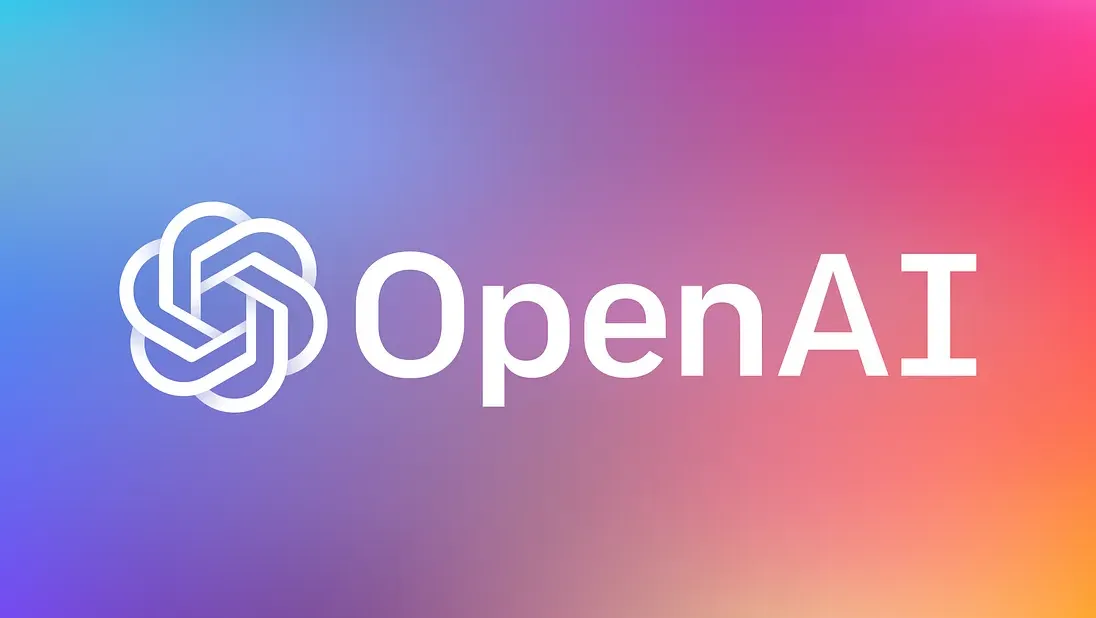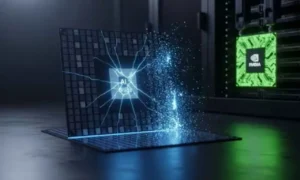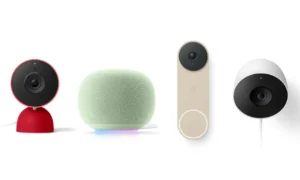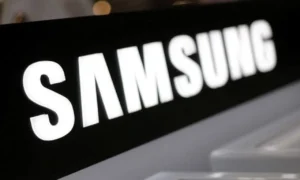Well, folks, the moment we’ve all been speculating about is finally here. The wizards at OpenAI, the masterminds who brought us ChatGPT, have pulled another rabbit out of the hat. Get ready to meet the “Sora” app, an OpenAI Social App that’s not just another face in the crowded social media space—it’s a whole new ballgame. This isn’t just an update; it’s a revolution in how we create, consume, and even think about video content.
If you’ve been feeling a little bit of a creative burnout or just tired of the same old dance challenges, you’re in for a treat. OpenAI is betting big that the future of social video isn’t about capturing reality, but about creating it from scratch. We’re talking about a platform where every single video is 100% generated by artificial intelligence. It’s a bold, slightly mind-bending concept, and we’ve got all the juicy details. Let’s dive into what this platform is all about and why it’s poised to be the most talked-about app of the year.
Contents
- 1 1. The Core Concept: A 100% AI-Generated Video Feed
- 2 2. It’s All Powered by the Astonishing Sora 2 Engine
- 3 3. The “Cameo” Feature: Putting Yourself in the Picture
- 4 4. A Familiar TikTok-Style Interface
- 5 5. Short and Sweet: 10-Second Video Clips
- 6 6. The Remix Culture: Building on Each Other’s Ideas
- 7 7. Strategic Timing: Is This a TikTok Competitor?
- 8 8. The Copyright Conundrum: An “Opt-Out” Approach
- 9 9. Content Moderation and Safety Filters
- 10 10. Invite-Only Rollout: The Exclusive Launch
- 11 11. The Bigger Picture: A New Era of Social Communication
1. The Core Concept: A 100% AI-Generated Video Feed
First things first, let’s get our heads around the main idea. This isn’t just an app; it’s a new digital ecosystem with a radical founding principle. Unlike TikTok, Instagram Reels, or YouTube Shorts, you can’t upload videos from your camera roll to the new Sora app. That’s right—zero. Every single clip you’ll see on your feed is born from a text prompt, crafted by a user and brought to life by OpenAI’s incredibly powerful new model, Sora 2. This strict “no uploads” rule is the foundational philosophy of the OpenAI Social App, forcing a complete break from the conventions of every social platform that has come before it.
This is a fundamental shift in what a social platform is. For years, social media has been about curating and sharing snippets of our real lives—our vacations, our pets, our dance moves. That model is based on documentation. The OpenAI Social App flips that script entirely. It’s a platform built for pure imagination, not documentation. The central creative act is no longer capturing a moment but authoring it from thin air. On the OpenAI Social App, your command of language is your new camera lens. Your creativity is the only limit.
Think of it as a collaborative filmmaking studio in your pocket, where your words are the camera, the actors, and the set all rolled into one. The platform effectively democratizes high-concept video production. You don’t need a green screen, a lighting rig, or even actors to create a cinematic masterpiece. This is a core appeal of the OpenAI Social App; it removes nearly all traditional barriers to entry, making visual storytelling accessible to anyone with an idea. The “social” aspect is redefined, shifting from “look what I did” to “look what I imagined.”
The feed will be a wild, unpredictable river of pure creativity. Scrolling through the OpenAI Social App won’t be about seeing what your friends had for brunch. Instead, you might see a photorealistic video of Abraham Lincoln debating philosophy with a robot in a coffee shop, followed by a whimsical animation of cats building a city out of yarn, and then a hyper-realistic scene of astronauts playing baseball on the rings of Saturn. This departure from reality-based content is what will make the OpenAI Social App a truly unique experience. It’s a space where the surreal becomes commonplace and the impossible is just a well-written prompt away.
2. It’s All Powered by the Astonishing Sora 2 Engine
The original Sora model that OpenAI teased back in February 2024 was already a showstopper. It could create videos with a surprising grasp of physics and object permanence—what the company called a “GPT-1 moment for video.” It was the proof of concept that wowed the world but, like early text AI, it had its quirks—a sort of dream-like logic where things could subtly go wrong. But what’s powering the new OpenAI Social App is Sora 2, and OpenAI is billing it as the “GPT-3.5 moment for video.” This isn’t just marketing speak; it signifies a monumental leap from a fascinating demo to a robust, reliable creative engine ready for the public.
So, what does that “GPT-3.5 moment” actually mean for you as a creator on the OpenAI Social App? It means a massive leap in quality, control, and realism that makes the entire platform viable. Sora 2 can generate incredibly complex scenes with synchronized dialogue and sound effects that are contextually aware. We’re not just talking about adding a stock “whoosh” sound; we’re talking about the engine understanding that a cat running on a wooden floor should have a different sound from a cat running on grass. This level of sensory detail is what will set content on the OpenAI Social App apart.
We’re talking about things that were previously impossible for AI. A prompt for “an Olympic gymnastics routine with accurate physics” won’t result in a character’s arm bending the wrong way. A video of “a cat clinging to someone doing a triple axel” will show plausible interactions between the two subjects. The model has a much deeper, more cohesive understanding of how the world works, allowing it to follow intricate instructions and maintain consistency across multiple shots. If your character is wearing a blue hat, that hat will stay blue and stay on their head realistically as they move. This reliability is the bedrock of the OpenAI Social App, ensuring that your creative vision is translated to the screen without being derailed by bizarre AI glitches.
This newfound power translates directly to user control. The Sora 2 engine allows the OpenAI Social App to interpret far more nuanced and complex prompts. You can specify not just the subject and action, but also the camera angle (“shot from a low angle”), the lighting (“dramatic golden hour lighting”), and the mood (“in the style of a noir film”). This isn’t just a toy that spits out random videos; it’s a seriously powerful creative tool. Sora 2 is the powerhouse that transforms the OpenAI Social App from a fun experiment into a legitimate new medium for art, comedy, and storytelling.
3. The “Cameo” Feature: Putting Yourself in the Picture
This is where things get really personal and, honestly, a little wild. One of the standout features of the OpenAI Social App is called “Cameos.” By recording a short video and audio clip of yourself within the app to verify your identity, you can grant the AI permission to use your likeness.
Once you’re verified, you can drop yourself—or your friends who have also verified their identity—into any scene you can imagine. Want to generate a video of you and your best friend riding a roller coaster or having a sword fight on Mars? Now you can. According to OpenAI’s internal testers, this is the feature that makes the app feel entirely new and deeply social. It transforms the platform from a simple video generator into a new way to communicate and create shared experiences. It’s a bit like creating your own personal deepfakes, but with full consent and control.
4. A Familiar TikTok-Style Interface
While the content is revolutionary, the user experience will feel comfortably familiar. This is a deliberate and brilliant strategic decision. OpenAI isn’t trying to reinvent the wheel when it comes to navigation because they are fundamentally reinventing the content itself. The app is designed with a classic vertical video feed and swipe-to-scroll navigation, just like TikTok. This choice is key to the mass adoption of the OpenAI Social App; it lowers the barrier to entry to practically zero.
By wrapping a revolutionary concept in a familiar package, OpenAI ensures users aren’t burdened with learning new gestures or menu layouts. You’ll have a personalized “For You” page powered by a recommendation algorithm, and the standard social features are all there: liking, commenting, and a “remix” function. However, the algorithm powering the OpenAI Social App will be unique. Instead of tracking your interest in real-world trends like dances or recipes, it will learn your imaginative taste. It will analyze the prompts you engage with, learning whether you prefer fantastical sci-fi worlds, absurdist humor, or photorealistic nature scenes, curating a feed that is a perfect reflection of your creative palate.
The idea is to make the platform intuitive from the get-go, so you can focus on the magic of creation rather than fumbling with a confusing interface. From the moment you launch the OpenAI Social App, your muscle memory from years of using other social platforms will take over. The only significant difference, and the most important one, will be the creation button. Instead of opening your phone’s camera, it will open a simple text box: the prompt bar. This single point of divergence is the gateway to the app’s entire value proposition. The surrounding familiar framework—the swiping, the liking, the commenting—is all designed to make that leap into AI creation feel as simple and natural as possible.
The learning curve for using the app should be practically nonexistent for anyone who has spent even a few minutes on modern social media. This intuitive design ensures that the incredible power of the Sora 2 engine doesn’t feel intimidating. The familiar UI acts as a Trojan horse, delivering a radically new form of social interaction in a way that feels comfortable and immediately usable. Ultimately, the interface of the OpenAI Social App is a quiet masterpiece of user experience design, prioritizing creative exploration over navigational puzzles.
5. Short and Sweet: 10-Second Video Clips
In its initial launch, the video creations on the OpenAI Social App will be limited to 10 seconds or shorter. This might seem brief, especially with TikTok now allowing 10-minute videos, but it’s a smart move. This constraint harks back to the early days of Vine, forcing creators to be concise and punchy.
This limitation likely serves two purposes. First, it manages the immense computational power required to generate high-quality video. Second, it keeps the content snappy and highly shareable. OpenAI is focusing on quality and creativity over duration, encouraging users to craft perfect, polished little moments of AI-generated art.
Read Also: Google AI Mode: 9 Essential Strategies for the Secret Shift to Visual Shopping
6. The Remix Culture: Building on Each Other’s Ideas
Creativity rarely happens in a vacuum, and OpenAI knows it. The “remix” feature is built directly into the app’s DNA. See a video you love? You can take the original prompt, tweak it, add new elements (like a Cameo of yourself!), and create your own version.
This fosters a collaborative environment where ideas can evolve and branch out in unexpected directions. One user’s prompt for “a golden retriever giving a lecture on quantum physics” could be remixed by another user to be “a team of golden retrievers debating quantum physics in the style of a 90s sitcom.” This feature is designed to maximize creation, turning consumption into inspiration for the next great video.
7. Strategic Timing: Is This a TikTok Competitor?
You bet it is. The launch of the OpenAI Social App is happening at a very interesting time. With TikTok’s ownership and future in the United States facing ongoing political and regulatory uncertainty, OpenAI seems to be seizing a golden opportunity. They are positioning the Sora app as a fresh, American-made alternative in the short-form video market.
By offering a platform without the geopolitical baggage associated with TikTok, OpenAI could attract a wave of users and creators looking for a new home. It’s a classic Silicon Valley move: find a vulnerable incumbent and strike with a novel, compelling product. They aren’t just competing on features; they’re competing on a whole new paradigm of content creation.
8. The Copyright Conundrum: An “Opt-Out” Approach
Here’s where things get a bit thorny. How does an AI model learn to create such amazing videos? By being trained on a massive dataset of existing visual content. This has inevitably led to questions and lawsuits about copyright infringement.
OpenAI is reportedly taking a controversial “opt-out” approach. This means that instead of asking for permission beforehand, they will use copyrighted material to train their models unless the copyright holders explicitly tell them not to. This is a bold and legally murky strategy that has already drawn criticism and is likely to be a major point of contention as the app grows. While they’ve stated the app will block requests for recognizable public figures without permission, the broader copyright issue remains a significant challenge. For credible information on copyright law, you can always refer to the U.S. Copyright Office.
9. Content Moderation and Safety Filters
With a tool this powerful, the potential for misuse is enormous. OpenAI is acutely aware of this and has built in safeguards and content filters. According to early reports, the system frequently refuses to generate certain prompts due to these restrictions. The goal is to prevent the creation of harmful, misleading, or explicit content.
Furthermore, with the Cameo feature, user safety is paramount. The app will reportedly notify you anytime someone uses your likeness in a video, even if that video is never published and remains in their drafts. This gives you a layer of oversight and control over your digital self. OpenAI has also been rolling out parental controls for its other products like ChatGPT, and we can expect similar features to ensure the Sora app is a safe environment, especially for younger users.
10. Invite-Only Rollout: The Exclusive Launch
Don’t rush to the app store just yet. In a classic move reminiscent of the launches of iconic tech products like Clubhouse and early Gmail, the OpenAI Social App, officially named “Sora,” is launching as an invite-only platform. This initial exclusivity is limited to iOS for users in the U.S. and Canada. This phased rollout is far more than just a marketing gimmick; it’s a multi-faceted, calculated strategy to ensure the long-term health and stability of what is arguably the most computationally demanding social platform ever conceived.
The first reason is purely technical. The sheer server power required to generate high-quality video for potentially millions of users is astronomical. An open launch would be a recipe for a catastrophic crash. The invite-only system allows OpenAI to control the rate of user growth, scaling their infrastructure methodically to meet demand without compromising the performance of the OpenAI Social App. This ensures that for early users, the experience is smooth and impressive, not laggy and frustrating.
Secondly, and perhaps more importantly, this strategy is about community curation. By hand-selecting or allowing trusted early adopters to invite their networks, OpenAI is seeding the platform with a specific type of user: creators, artists, and tech enthusiasts who understand the vision and are eager to push the creative boundaries. This initial group will set the cultural tone for the entire OpenAI Social App. This curation is vital for preventing the platform from being immediately overwhelmed by low-effort content and instead fostering an environment of genuine innovation and artistic exploration.
The idea is to have you join with your friends, making the social features like Cameos immediately more fun and engaging. A feature that lets you put your friends in AI videos is only useful if your friends are actually on the app. The invite system encourages small groups and social circles to onboard together, instantly creating the network density needed for the social features of the OpenAI Social App to feel alive and functional from day one. Once you get an invite, you can start creating. This exclusivity builds organic hype and ensures that the initial user base is not just curious, but genuinely invested in the platform’s success, helping to forge a positive and collaborative community spirit for the OpenAI Social App.
11. The Bigger Picture: A New Era of Social Communication
So, what does this all mean? The OpenAI Social App is more than just a novelty. It represents a potential paradigm shift in social media. We are moving from a world of curated reality to a world of generated imagination. This platform isn’t just for artists or filmmakers; it’s for everyone. It’s a new way to tell stories, crack jokes, and connect with friends.
Imagine sending a happy birthday message not as a text, but as a custom-generated video of you both celebrating on the moon. Think about brainstorming a creative project not with a mood board, but with a series of AI-generated video concepts. This app democratizes high-end video production, putting a Hollywood-level visual effects studio into the hands of anyone with an idea.
The road ahead won’t be without its bumps. Debates around copyright, misinformation, and the very nature of authenticity will intensify. But one thing is for sure: OpenAI has just kicked the door wide open to the next chapter of digital creativity. The future of video is here, and it’s more imaginative, more personal, and a whole lot weirder than we ever expected. Get ready to create.




